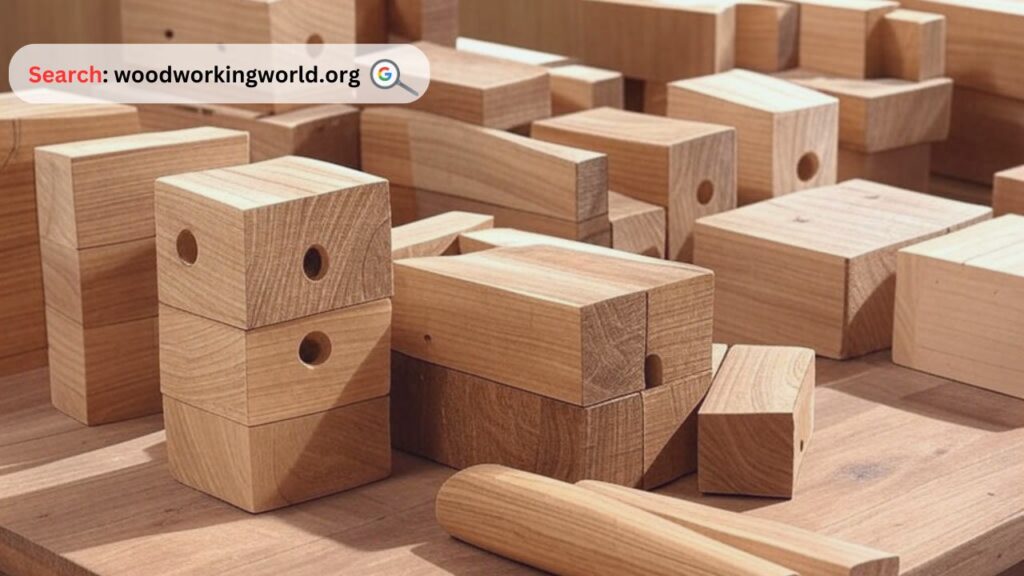Create long-lasting furniture with strong woodworking joints! Learn the best techniques, tools, and tips for durable, sturdy builds. Read now!
Crafting durable, high-quality furniture requires more than just selecting the right type of wood. The secret to long-lasting furniture lies in the strength and precision of woodworking joints. A well-constructed joint not only enhances the structural integrity of a piece but also contributes to its aesthetic appeal. In this article, we will explore the various types of woodworking joints, their applications, and step-by-step instructions to create them. By mastering these joints, you can ensure that your furniture stands the test of time.

Why Strong Woodworking Joints Matter
Woodworking joints serve as the backbone of furniture, holding pieces of wood together securely. The right joint can prevent wobbling, warping, and eventual breakage. Here are key reasons why strong joints are essential:
- Durability: Well-crafted joints can withstand stress, weight, and movement over time.
- Aesthetics: Seamless joints enhance the beauty of the furniture without the need for excessive hardware.
- Functionality: Properly designed joints contribute to stability and usability.
- Cost-effectiveness: Reducing the need for repairs and replacements saves money in the long run.
👉 Build 16,000+ Projects with Step-by-Step Plans—No Big Workshop or Costly Tools Needed! Start Now!
Essential Woodworking Joints for Long-Lasting Furniture
1. Butt Joint
- Description: A simple joint where two pieces of wood are joined at their ends.
- Pros: Easy to construct.
- Cons: Weak unless reinforced with screws, dowels, or glue.
- Best For: Basic frameworks and simple projects.
2. Dowel Joint
- Description: Uses wooden dowels inserted into aligned holes to create a strong bond.
- Pros: Stronger than a butt joint, no visible fasteners.
- Cons: Requires precise hole alignment.
- Best For: Chair frames, cabinets, and tabletops.
3. Mortise and Tenon Joint
- Description: A classic joint where a tenon fits into a mortise hole.
- Pros: Exceptionally strong, aesthetically pleasing.
- Cons: Requires skill and time to create.
- Best For: Tables, chairs, and door frames.
4. Dovetail Joint
- Description: Interlocking wedge-shaped cuts provide superior strength.
- Pros: Highly durable and visually appealing.
- Cons: Challenging to cut accurately without proper tools.
- Best For: Drawers and boxes.
5. Biscuit Joint
- Description: Uses oval-shaped wooden biscuits in slots to align and strengthen joints.
- Pros: Invisible after assembly, good for wide panels.
- Cons: Less strength compared to mortise and tenon.
- Best For: Tabletops, panels, and cabinets.
Expert tips on Woodworking 🌿📦 Watch now!

6. Finger Joint
- Description: Interlocking rectangular cuts create an extended bonding surface.
- Pros: Provides strength and lengthens wood pieces.
- Cons: Requires precise cutting.
- Best For: Tabletops and wooden beams.
7. Lap Joint
- Description: Two pieces overlap and are glued or screwed together.
- Pros: Fairly strong and easy to make.
- Cons: Less aesthetically pleasing if not done neatly.
- Best For: Frames and structural applications.
Step-by-Step Guide to Creating Strong Woodworking Joints
Step 1: Select the Right Wood Type
The choice of wood plays a crucial role in the strength of a joint. Hardwoods like oak, maple, and walnut are ideal for strong joints, while softwoods like pine may require additional reinforcements.
Step 2: Marking and Measuring Accurately
- Use a carpenter’s square, measuring tape, and marking gauge for precise cuts.
- Always mark both pieces of wood to ensure alignment.
Step 3: Cutting the Joints
- Use appropriate tools such as a table saw, dovetail saw, or router for accurate cuts.
- For intricate joints like dovetails or finger joints, a jig can improve accuracy.
Step 4: Dry Fitting
- Before applying glue, fit the joints together to check for alignment and snugness.
- Make necessary adjustments to avoid gaps or misalignment.
Step 5: Gluing and Clamping
- Use high-quality wood glue for a strong bond.
- Apply even pressure using clamps and allow adequate drying time.
Step 6: Reinforcement (If Needed)
- Add dowels, screws, or biscuits for additional strength.
- Consider using corner braces for extra support.
Step 7: Sanding and Finishing
- Sand the joints smoothly to remove excess glue and ensure a seamless finish.
- Apply varnish, oil, or paint to protect the wood from moisture and wear.
Comparison Table of Woodworking Joints
| Joint Type | Strength | Complexity | Best For |
|---|---|---|---|
| Butt Joint | Low | Easy | Basic projects |
| Dowel Joint | Medium | Moderate | Frames, cabinets |
| Mortise & Tenon | High | Difficult | Tables, doors |
| Dovetail Joint | High | Difficult | Drawers, boxes |
| Biscuit Joint | Medium | Moderate | Panels, cabinets |
| Finger Joint | High | Difficult | Tabletops, beams |
| Lap Joint | Medium | Easy | Frames, structures |
Expert Tip
“Measure twice, cut once. Precision is key to strong woodworking joints.” – Traditional Woodworking Proverb
Frequently Asked Questions (FAQs)
1. What is the strongest woodworking joint?
The mortise and tenon joint is often considered the strongest due to its deep interlocking design.
2. Can I make strong joints without special tools?
Yes, but having the right tools like a saw, chisel, and clamps significantly improves the quality and strength of joints.
3. What glue should I use for woodworking joints?
High-quality wood glue, such as PVA (polyvinyl acetate) or epoxy, provides a strong bond for most joints.
4. How do I prevent wood joints from loosening over time?
Use proper reinforcement techniques like dowels, biscuits, or additional screws, and ensure the joints are well-glued and clamped.
5. What is the easiest joint for beginners?
The butt joint is the simplest but should be reinforced with screws or dowels for added strength.
6. Are dovetail joints necessary for furniture making?
Dovetail joints are ideal for drawers and box constructions due to their resistance to pulling forces, but other joints can also be used depending on the project.

Conclusion
Creating long-lasting furniture requires a solid understanding of woodworking joints. By selecting the right joint for your project and following precise cutting and assembly techniques, you can build furniture that is not only strong but also aesthetically pleasing. Whether you are a beginner or an experienced woodworker, mastering these joints will elevate your craftsmanship and ensure your creations endure for generations.
👉 Click To Order Teds Woodworking With A 60-Money-back Guarantee From – Official Website